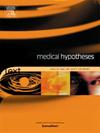贝叶斯预测编码假说:大脑作为观察者洞察的关键角色
IF 0.8
4区 医学
Q3 MEDICINE, RESEARCH & EXPERIMENTAL
引用次数: 0
摘要
催眠的定义是集中注意力和减少外围意识,它将注意力、期望和意象等心理过程整合在一起。自我催眠是一个过程,在这个过程中,个体诱导自己进入催眠状态,以达到特定的目标,如减轻压力、改变行为或克服恐惧症。这种练习包括深度放松和高度集中,让建议绕过意识而影响潜意识。相比之下,内观冥想,也被称为内观,是一种根植于佛教传统的正念冥想形式。修持者观察他们的思想、情绪和身体的感觉,当它们生灭时,获得对实相、无常和心的运作的深刻洞见。在本文中,我提出了一个贝叶斯预测编码假设作为一个理论框架来比较自我催眠和内观冥想,后者提出大脑通过使用贝叶斯推理生成和更新关于感官输入的预测来处理信息,其中感知不是对刺激的被动接受,而是基于先验知识和期望的主动构建。假设线性系统动力学和高斯噪声,我提出卡尔曼滤波模型作为内观冥想的最佳观察者,启动自我催眠中有效认知控制所必需的测量模型。这种贝叶斯测量模型对于规划功能性神经障碍的治疗性认知控制干预至关重要,本文假设功能性神经障碍是成人适应不良学习的形式。本文章由计算机程序翻译,如有差异,请以英文原文为准。
Bayesian predictive coding hypothesis: Brain as observer’s key role in insight
Hypnosis, defined by focused attention and reduced peripheral awareness, integrates psychological processes such as attention, expectancy, and imagery. Self-hypnosis is a process where an individual induces a hypnotic state in themselves to achieve specific goals, such as stress reduction, behaviour modification, or overcoming phobias. This practice involves deep relaxation and heightened focus, allowing suggestions to bypass the conscious mind and influence the subconscious. In contrast, Insight meditation, also known as Vipassana, is a form of mindfulness meditation rooted in Buddhist traditions. Practitioners observe their thoughts, emotions, and bodily sensations as they arise and pass away, gaining deep insights into the nature of reality, impermanence, and the workings of the mind. In this paper, I present a Bayesian Predictive Coding Hypothesis as a theoretical framework to compare Self-hypnosis with Insight meditation that proposes brain processes information by generating and updating predictions about sensory inputs using Bayesian inference where perception is not a passive reception of stimuli, but an active construction based on prior knowledge and expectations. Assuming linear system dynamics and Gaussian noise, I propose that a Kalman filter model functions as an optimal observer subserving Insight meditation, priming the measurement model necessary for effective cognitive control in Self-hypnosis. This Bayesian measurement model is crucial for planning therapeutic cognitive control interventions in functional neurological disorders, which are hypothesized in this paper to be forms of maladaptive learning in adults.
求助全文
通过发布文献求助,成功后即可免费获取论文全文。
去求助
来源期刊

Medical hypotheses
医学-医学:研究与实验
CiteScore
10.60
自引率
2.10%
发文量
167
审稿时长
60 days
期刊介绍:
Medical Hypotheses is a forum for ideas in medicine and related biomedical sciences. It will publish interesting and important theoretical papers that foster the diversity and debate upon which the scientific process thrives. The Aims and Scope of Medical Hypotheses are no different now from what was proposed by the founder of the journal, the late Dr David Horrobin. In his introduction to the first issue of the Journal, he asks ''what sorts of papers will be published in Medical Hypotheses? and goes on to answer ''Medical Hypotheses will publish papers which describe theories, ideas which have a great deal of observational support and some hypotheses where experimental support is yet fragmentary''. (Horrobin DF, 1975 Ideas in Biomedical Science: Reasons for the foundation of Medical Hypotheses. Medical Hypotheses Volume 1, Issue 1, January-February 1975, Pages 1-2.). Medical Hypotheses was therefore launched, and still exists today, to give novel, radical new ideas and speculations in medicine open-minded consideration, opening the field to radical hypotheses which would be rejected by most conventional journals. Papers in Medical Hypotheses take a standard scientific form in terms of style, structure and referencing. The journal therefore constitutes a bridge between cutting-edge theory and the mainstream of medical and scientific communication, which ideas must eventually enter if they are to be critiqued and tested against observations.
 求助内容:
求助内容: 应助结果提醒方式:
应助结果提醒方式:


